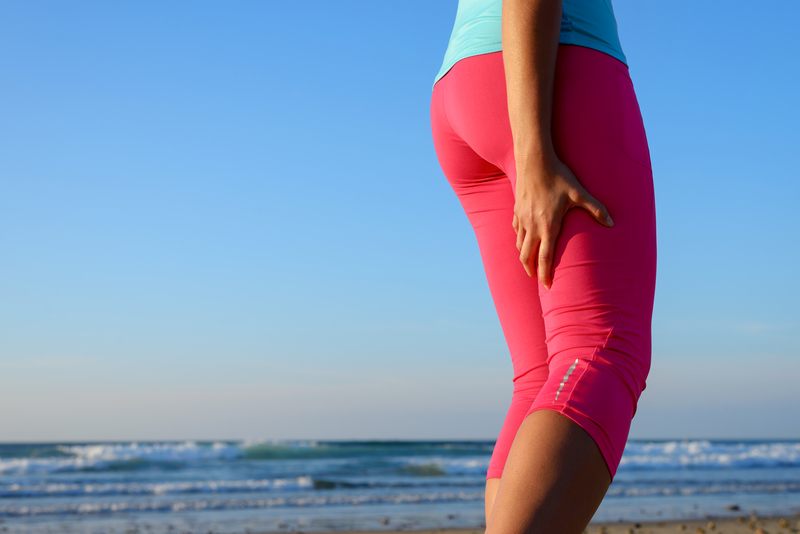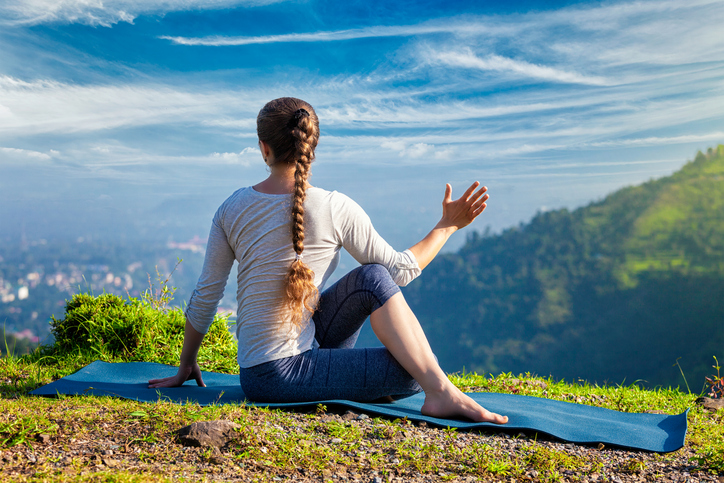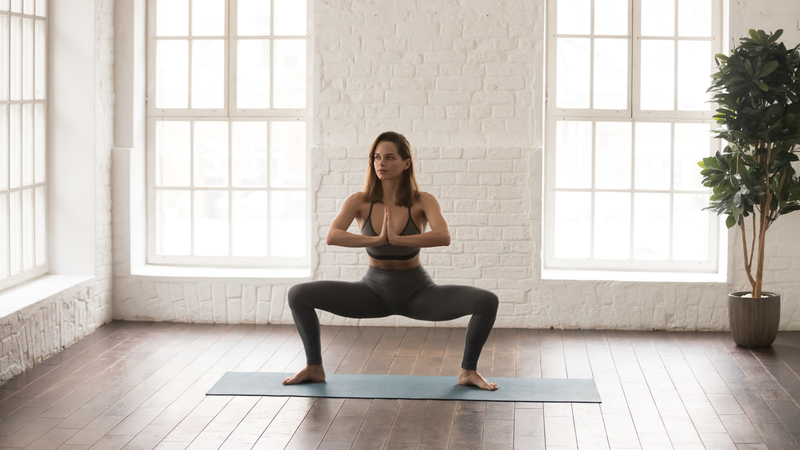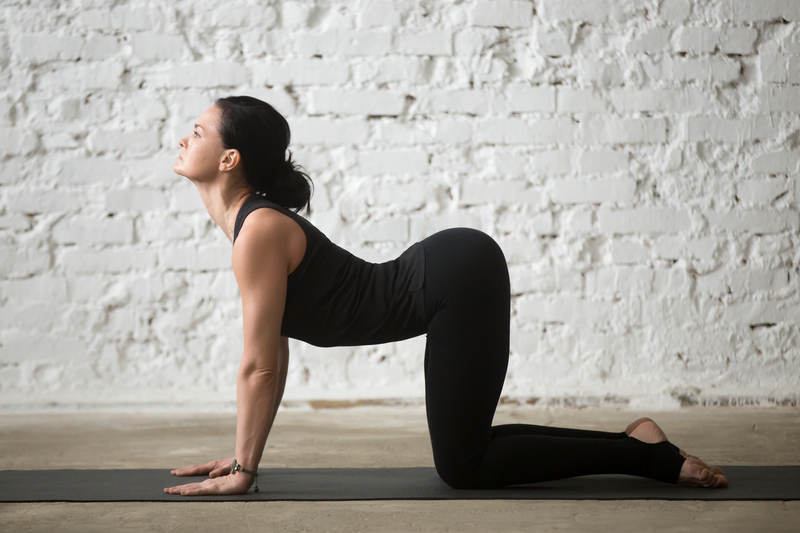What’s the Difference Between Tight and Stiff Muscles (and what to do to loosen up)

Do you know the difference between tight vs. stiff muscles? Not all muscle pain is created equal. You can learn to tell the difference and work toward loosening up accordingly with some easy flexibility and mobility exercises.
How Do You Know If Your Muscle Is Tight or If It Is Stiff?
You might feel some painful sensations in your muscles, but you’re not really sure why. It could be tightness, or it could be stiffness. What’s the difference?
Tightness can occur for several reasons. You might do a taxing workout where you push yourself, leading to what’s called “DOMS” or “delayed onset muscle soreness.” This kind of soreness is normal, natural, and a big part of the muscle-building process. Often, you’ll feel sore a day or two after a tough resistance training workout. But, that pain will subside over the next few days (max), and usually, by the time you’re ready to train that body part again, the soreness is gone.
Muscle tightness can progress to muscle stiffness when that soreness doesn’t easily go away. Stiffness is generally going to go a bit beyond just feeling tight. Stiffness involves not only the muscle but the underlying tendons, ligaments, and joints as well. It can feel very similar to the sensation you relate to feeling “sore,” but the soreness will last longer, maybe not even go away, and you’ll find your mobility is impaired as well.
Tight vs. stiff muscles comes down to flexibility vs. mobility, and both are important. Flexibility means your muscles can stretch and are pliable. Mobility is defined as the capacity to move without restriction in all directions and take a joint through a full range of motion.
Here’s How to Loosen Up Tight Muscles
Getting loose when your muscles are tight mainly comes down to doing a lot of stretching. You’ll want to include plenty of flexibility exercises during and after your workout (when your muscles are warm and pliable).
Try some of these flexibility exercises to help you loosen up tight muscles:
Bent-over Hamstring Stretch—start with your feet about hip-width apart (wider if you’re less flexible). Point your toes slightly out to the sides. Next, cross your arms in front of you and fold forward at the waist, allowing your upper body to hang. Feel a good stretch through the back of your legs. You can also gently move your torso from side to side, allowing for a fuller stretch on each leg.

Seated Spinal Twist—this is always a great stretch and can help you loosen up multiple areas at once. Start by sitting on the floor with your legs out in front of you. Bring your right leg up and over the left, bending at the knee, to place your right heel next to the outside of your left knee. Next, twist your upper body to the right as far as you can, placing your left elbow on the outside of your right knee. Hold the stretch through three deep breaths. Return to the start and repeat on the opposite side.

Upper Body Stretch—this exercise will open up tight chest and shoulder muscles. Start in a doorway and stretch out your arms to your sides, parallel to the ground, so that one hand is on the doorframe on each side of you. Gently let your upper body lean forward into the doorway, effectively stretching your chest and shoulders in the process. You can also do this with one arm on a surface at a time. Hold the stretch for a count of 10 and release.

Find other stretches as well that you enjoy and will do regularly.
If a lot of stretching isn’t getting the job done, you may be dealing with stiff muscles, which need more active stretches and movement.
Here’s How to Loosen Up Stiff Muscles
Since muscle stiffness is mainly caused by underlying issues with joint stiffness and mobility, working to improve in these areas is important. The way to improve your mobility is to bring your joints through full ranges of motion.
Try some of these mobility exercises to help you loosen up stiff muscles:
Deep Body Squats—this is a great mobility exercise to help loosen up your hips, knees, ankles, and lower back. Start by standing with your feet a little wider than hip-width apart. Point your toes and knees slightly outward and bend at the knees, dropping your hips down as far as you can toward the ground. Relax into this position for 30 seconds and feel a deep stretch through your hips and back. Return to standing and repeat.

Inward and Outward Shoulder Rotations—these movements will greatly enhance your shoulder mobility. Begin by looping a thin exercise band around a stable surface and grab the opposite end with your right hand. Stand so your right shoulder faces the origin point where you secured the band. Bring your elbow close to your side with your arm bent at a 90-degree angle. (You will keep your elbow tucked there throughout the movement.) Next, move your hand toward your middle (keeping it parallel to the ground throughout the movement). Bring your hand and forearm back out to the starting position and stay in control of the tension while you do this. You’ll feel this is your shoulder joint. Repeat ten times and then switch arms.
You can also do an outward rotation by grasping the exercise band with the opposite hand and starting with your arm already across your middle. Next, you’ll pull the band taught as you bring your hand and forearm out to your side. (Remember to keep your elbow tucked).
Cat-Cow Movement—start on your hands and knees with your palms on the ground down and directly under your shoulders. Take a deep breath in and drop your head down while arching your back upward. Allow for a good stretch and then breathe out, bringing your head back up and back while arching your back to press your chest and stomach toward the floor. Go through these movements 15 – 20 times.

Neck Circles—start in a seated position with a neutral spine. Tip your head all the way to the right, then let it drop forward and swing to the left. From there, continuing the circular motion, bring your head around to the back until you’re looking up at the ceiling. Do five circles in one direction and then repeat in the opposite direction.
There are many other mobility exercises you can try as well, depending on the area that is causing you pain and stiffness.
The bottom line is if you’re feeling really tight, try stretching first to see if it relieves the pain. You can progress to massage and even self-help with therapy balls, foam rolling, and heat treatments. If none of these seem to be working, you might be dealing with stiffness, and it’s time to set up a mobility plan.





